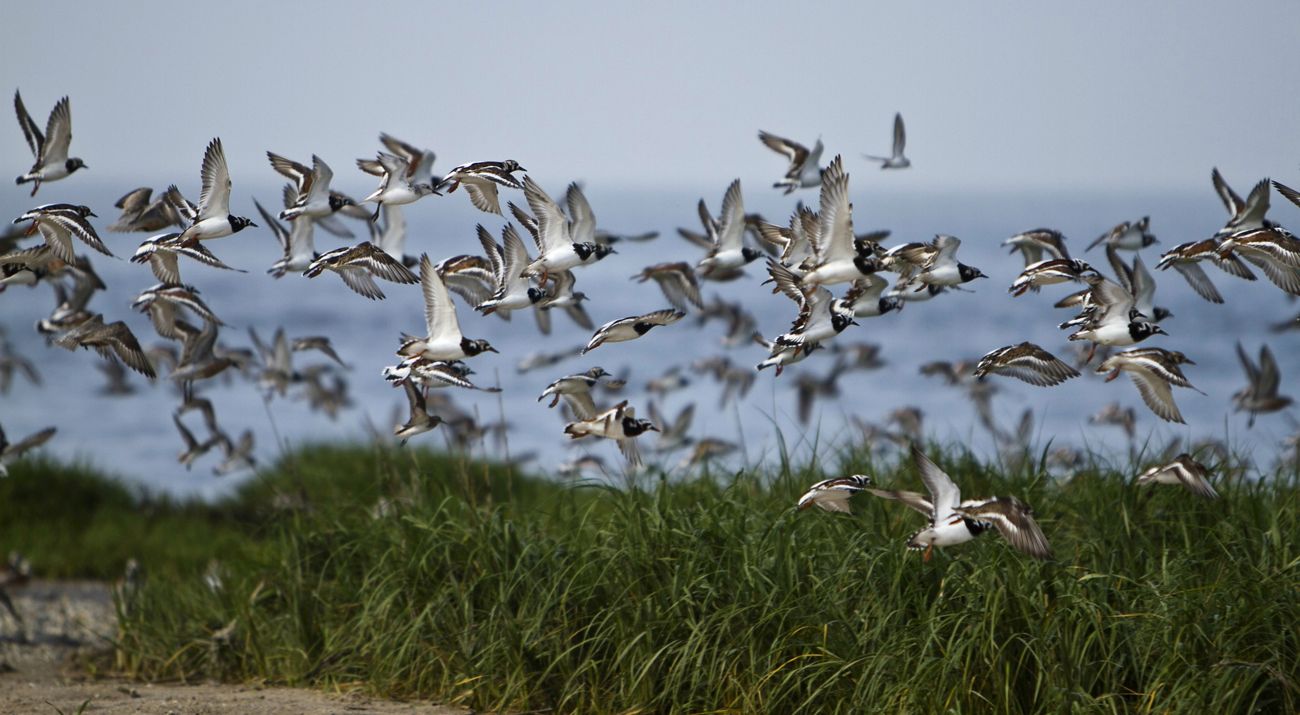Nature's Last Coastal Strongholds
Scientists identify the Delaware Bay as a coastal stronghold that can protect people and nature from rising sea levels.
Sea levels are expected to rise 1 to 6 feet over the next century, and this impact of climate change will affect millions of Americans who live and work in coastal counties. With more than half of our state’s population living in coastal communities, New Jersey is especially at risk.
But what communities will be impacted the most? Are there healthy habitats that can withstand the impacts of sea level rise? What will happen to the coastal areas that are important to fish, wildlife, and economies?
Knowing that these questions will only become more urgent, a team of 35 scientists with The Nature Conservancy evaluated more than 10,000 coastal sites in the Northeast and Mid-Atlantic to determine their ability to provide a natural buffer to increased inundation from rising seas.
Key Findings
Our scientists, led by Mark Anderson, found that certain key areas can provide threatened habitats “escape routes” from sea level rise.
Among the strongest, most resilient coastal habitats? The Delaware Bay in New Jersey and Delaware.
The Delaware Bay's beaches and tidal marshes, for example, can shield communities from storm surges while also providing nursing grounds for wildlife. Salt marshes rival forests in carbon storage and the sandy beaches serve as breeding grounds for rare species while supporting local tourism economies.
Quote: Mark Anderson
This study gives us hope that both people and nature can adapt to sea level rise, but we need to protect these special landscapes so they can protect us.
The authors of the study, however, warn that conservation of these special, resilient places are critical if we are to sustain nature's benefits into the future.
In New Jersey, we are pioneering innovative, nature-based techniques to protect our shorelines and keep the beaches and marshes of the Delaware Bay healthy and resilient.
Gandy's Beach Living Shoreline
In 2016, we installed a half-mile, experimental oyster reef breakwater at Gandy's Beach Preserve on Delaware Bay. Our goal was to demonstrate the powerful role nature-based infrastructure plays in protecting coastlines and improving habitat.
One year later, post-construction monitoring has demonstrated a 50% reduction in wave energy. Sand building up behind the structures is a promising sign that the reef can sustain important horseshoe crab beaches. Results show 750,000 baby oysters, 71% of which survived the winter and are growing rapidly. More oysters will start growing on the reef every summer!
Saving "Drowning" Marshes
We are piloting a program that uses the unwanted sediment from navigational dredging to build up the elevation of at-risk salt marshes on the Delaware Bay and Atlantic Coast. The process, called “thin spreading,” employs water cannons to spray 3 to 6 inches of clean dredge material across low-lying and degraded sections of marsh.
The project aims to demonstrate the benefits of salt marshes in helping to reduce flood risk to local communities, while testing an innovative restoration technique. Improving the health of these marshes allows them to better respond to sea level rise while providing habitat for wildlife and a multitude of benefits for coastal communities.
Monitoring of the restored areas show good vegetation growth and the homecoming of turtles, birds and other marsh dwellers.
Join Us
Climate change may be the most important challenge humanity has ever faced. But together, we all are part of the solution.
- Donate today to help keep special places like the Delaware Bay healthy and resilient in the face of rising seas.
- Sign the climate pledge. Together, we must hold nations accountable to cut harmful carbon emissions and combat climate change.
- Know your carbon footprint. Use our Carbon Calculator to see many tons of carbon dioxide and other greenhouse gases your choices create each year.
